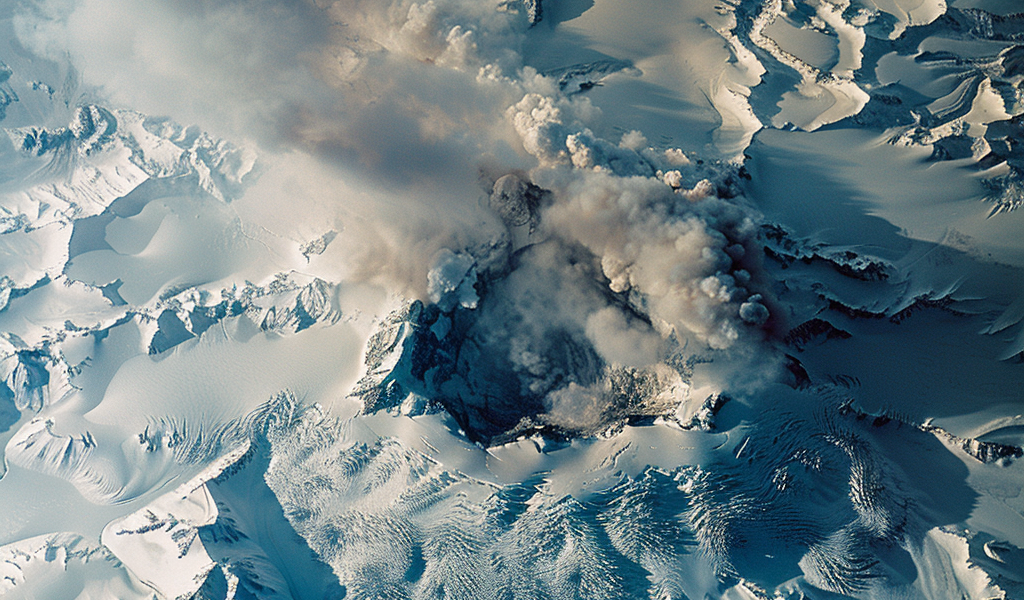Recent research has unveiled a compelling connection between glaciers and volcanic activity, suggesting that the behavior of glaciers could serve as a crucial indicator for predicting volcanic eruptions. This groundbreaking study, conducted by a team of scientists, highlights how glaciers located near active volcanoes exhibit significantly faster flow rates compared to their counterparts situated farther away.
Mount Veniaminof, an active volcano nestled in southern Alaska, serves as a prominent example of this phenomenon. The study’s coauthor, Matteo Spagnolo, a geologist from the University of Aberdeen, emphasizes the potential of this discovery for enhancing volcanic monitoring efforts. By tracking the speed of glaciers, local authorities could receive vital early warnings, allowing them to implement timely evacuation plans or enforce no-fly zones around affected areas.
The researchers meticulously analyzed satellite data from nearly 180,000 glaciers worldwide, taking into account various factors such as local climate conditions, ice thickness, and mountain slope gradients. Their findings reveal that glaciers situated within a three-mile radius of active volcanoes flow, on average, 46 percent faster than those located further away. This accelerated movement is attributed to the underground heat emanating from volcanoes, which melts the ice at the base of nearby glaciers, leading to increased flow rates.
The implications of this research extend beyond immediate volcanic monitoring. The authors of the study also raise concerns about the potential impact of volcanic activity on the stability of the West Antarctic Ice Sheet. As volcanic eruptions can contribute to the destabilization of ice masses, the researchers highlight the need for increased vigilance in monitoring glaciers in regions like Antarctica, where the consequences could be far-reaching.
The findings have been published in the journal Communications Earth & Environment, marking a significant contribution to the field of volcanology and glaciology. This research not only enhances our understanding of the intricate relationship between glaciers and volcanic activity but also underscores the importance of developing advanced monitoring techniques to safeguard communities living in proximity to these natural hazards.
As climate change continues to influence glacial dynamics and volcanic behavior, the need for innovative solutions to predict and mitigate risks associated with these phenomena becomes increasingly urgent. The study serves as a reminder of the interconnectedness of Earth’s systems and the vital role that scientific research plays in addressing the challenges posed by natural disasters.
In addition to the immediate implications for volcanic monitoring, this research opens new avenues for exploring the broader impacts of climate change on glacial systems. Understanding how glaciers respond to geological activity can provide valuable insights into the potential consequences of global warming on ice masses worldwide.
As scientists continue to unravel the complexities of glacier dynamics and volcanic interactions, it becomes clear that further research is essential for enhancing our preparedness for future eruptions. The study’s findings may pave the way for the development of more sophisticated monitoring strategies, enabling authorities to respond effectively to volcanic threats and protect vulnerable populations.
The research community is now tasked with exploring the implications of these findings in various contexts, including the potential influence of volcanic activity on regional climate patterns and the long-term stability of ice sheets. As the urgency of addressing climate change intensifies, the intersection of glaciology and volcanology will likely play a critical role in shaping our understanding of Earth’s changing environment.
In summary, the relationship between glaciers and volcanic activity presents a promising avenue for improving our ability to predict eruptions and safeguard communities. By leveraging advanced satellite data and monitoring techniques, researchers are poised to enhance our understanding of these dynamic systems and their implications for global climate change.





